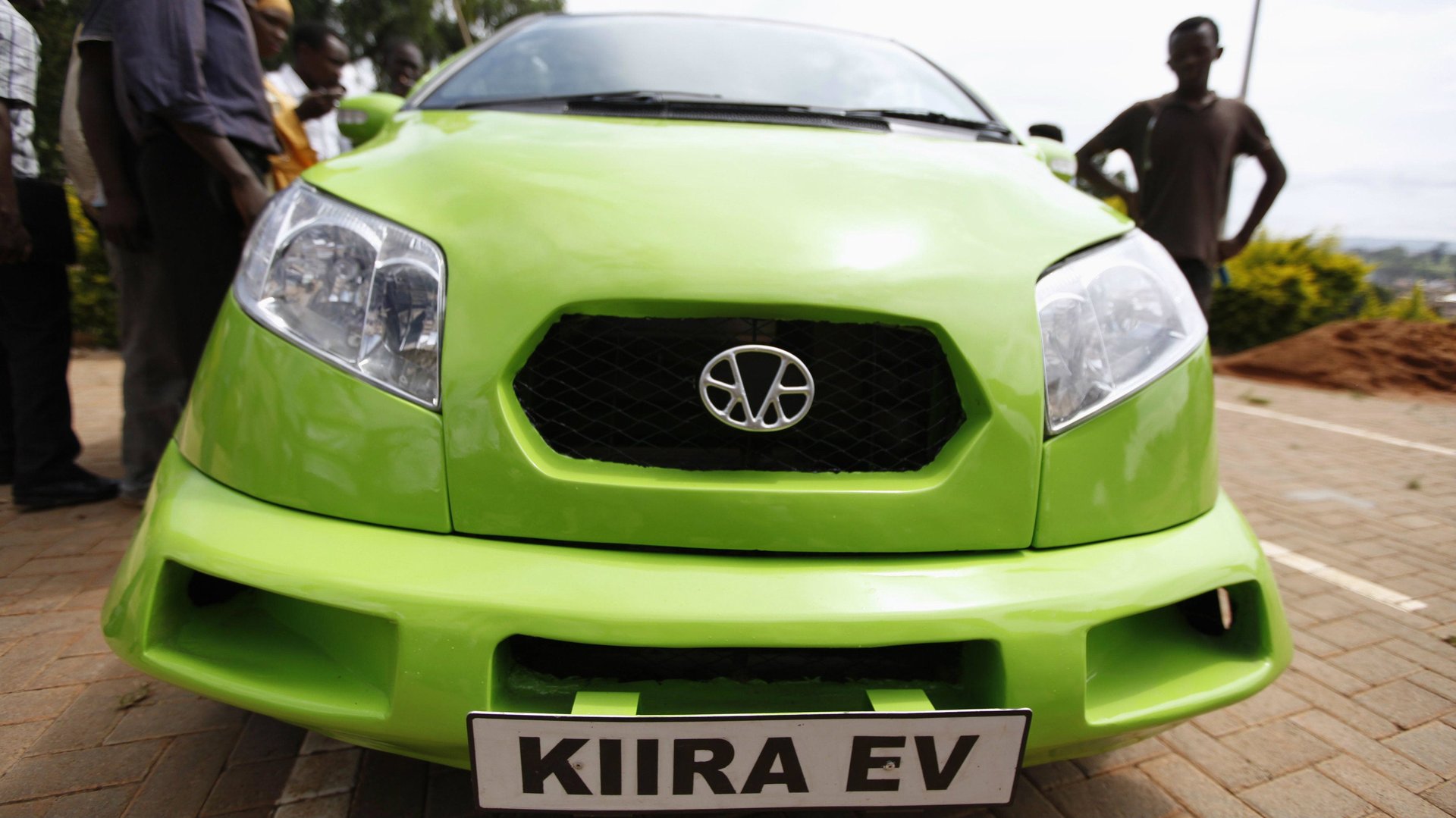A Ugandan college project is going to become Africa’s first homegrown hybrid car
President Yoweri Museveni wants to turn Uganda into a middle-income country. One approach his government is looking at is to make it the hub of the automative industry in East Africa.


President Yoweri Museveni wants to turn Uganda into a middle-income country. One approach his government is looking at is to make it the hub of the automative industry in East Africa.
The project that has caught people’s imagination is the Kiira Smack, a petrol-and-electric hybrid car being developed by the state-run Kiira Motors Corporation (KMC). SciDev.Net reports that the government has put an initial $43.5 million into the project. Paul Musasizi, KMC’s chief executive officer, says it plans to build 7,000 models per year of the five-seater, lithium-battery-powered sedan, which will have a 180 kph (112 mph) top speed and a battery with a range of up to 50 kilometers.
Kiira is the brainchild of University of Makerere students, who in 2006 entered an MIT design collaborative project to build plug-in electric hybrid cars. Five years later they unveiled the Kiira EV in Nairobi, the initial prototype for the Kiira Smack.
To get production up to 7,000 cars a year, KMC is looking to raise $350 million from investors, with the target of going into mass production by 2018 and selling the vehicles for $20,000 each.
Analysts at BMI Research contend that KMC is being mighty ambitious. The limited supplies of both reliable electricity and skilled labor in Uganda could make the car expensive to produce, they say, and the country’s car market isn’t big enough to sell the targeted 7,000 cars a year. According to one estimate, the entire East African market consumes just 20,000 new cars a year, and while the Kiira’s $20,000 price tag is meant to make it competitive with other cars in the luxury bracket, it’s still a high-end car.
To become a viable business, KMC will have to try and establish itself beyond Uganda. Kenya is one option, where the market for cars is growing. Vehicle registrations grew by about 9% in 2014 from a year before, according to a report by WardsAuto, and 17,500 new cars were sold. The challenge for KMC, however, is whether its relatively unknown brand can compete with well-established players such as Toyota and General Motors. The BMI analysts think not.
Then there is the question of whether hybrids are viable for the East African market at all. Charging electric cars can put enormous pressure on power grids, as South Africa, which has tried to introduce such cars, has discovered. “Plugging an electric vehicle into your home is the equivalent of adding three houses to the grid,” an analyst told IT News Africa. “When owners install dedicated electric charging stations to charge more quickly, it can be a significant burden.” In East Africa, where only 20% of people have access to electricity, a car like the Kiira Smack may be a little ahead of its time.